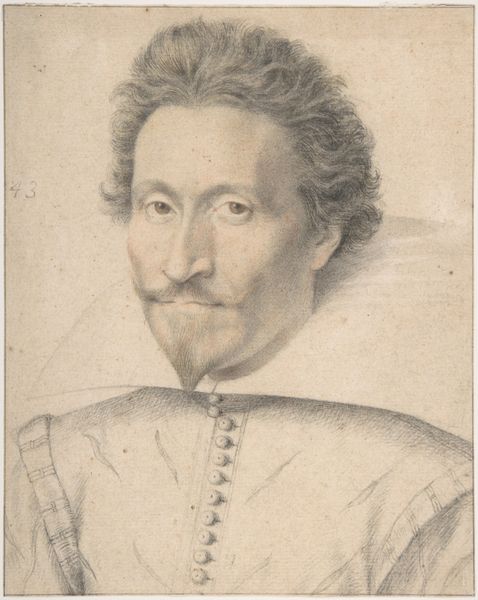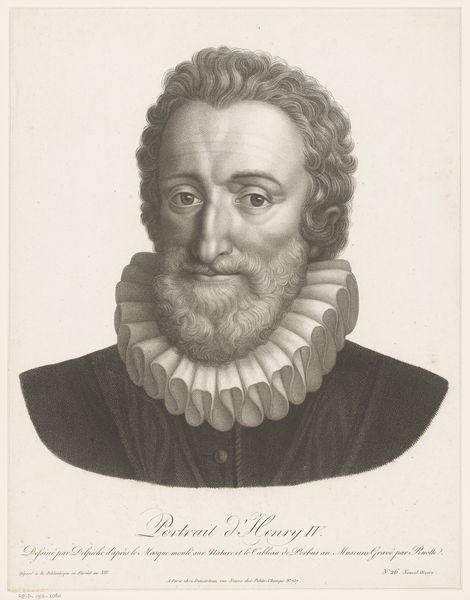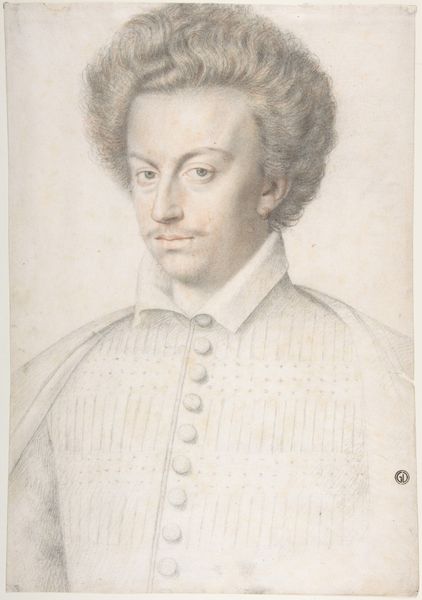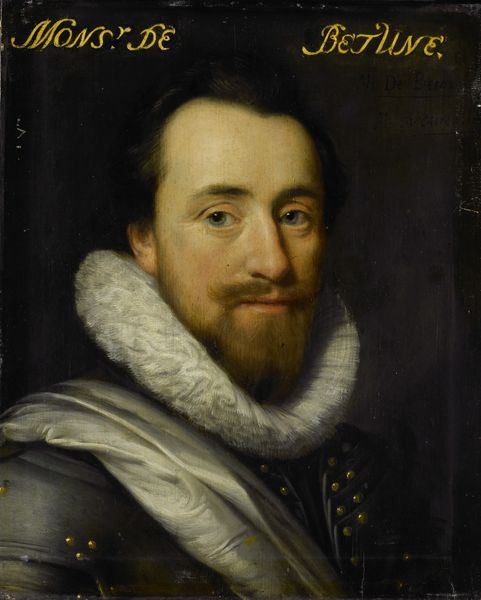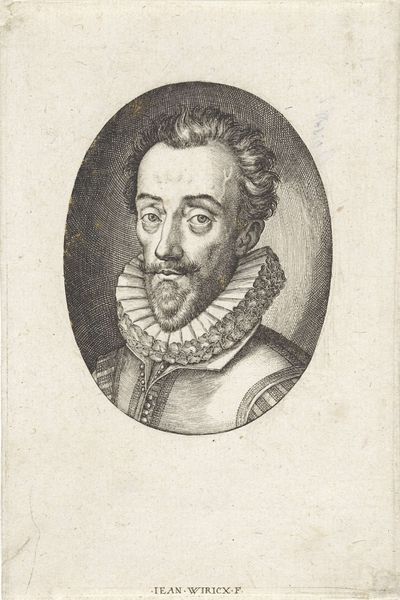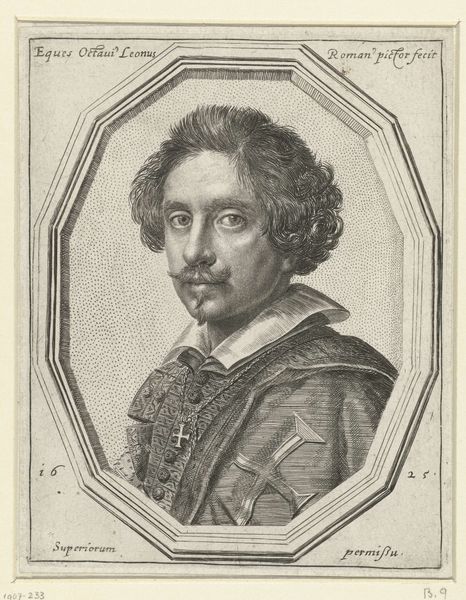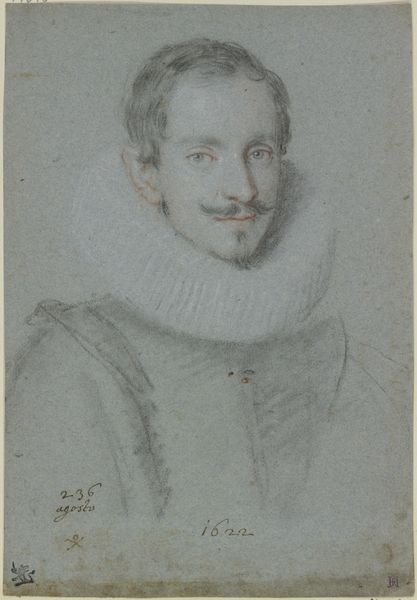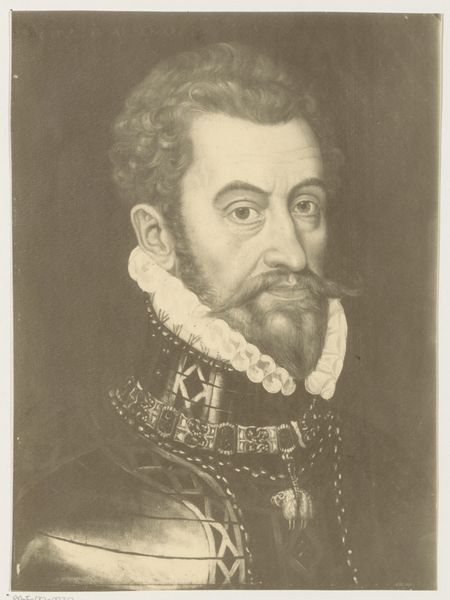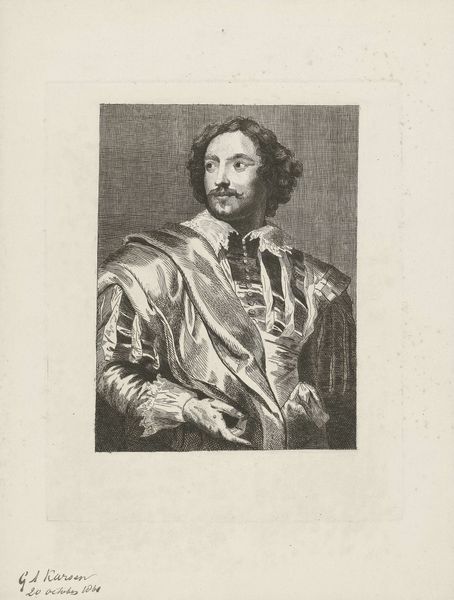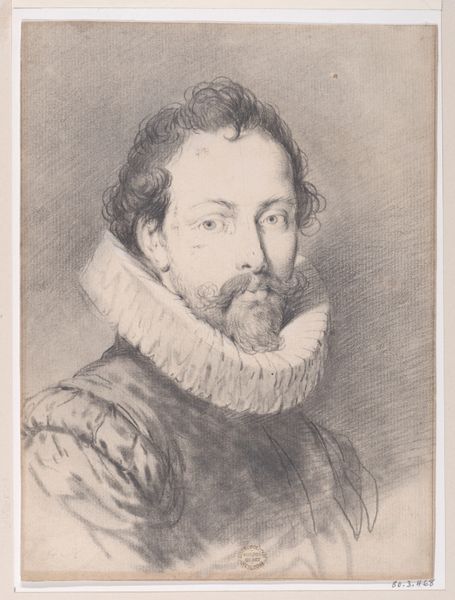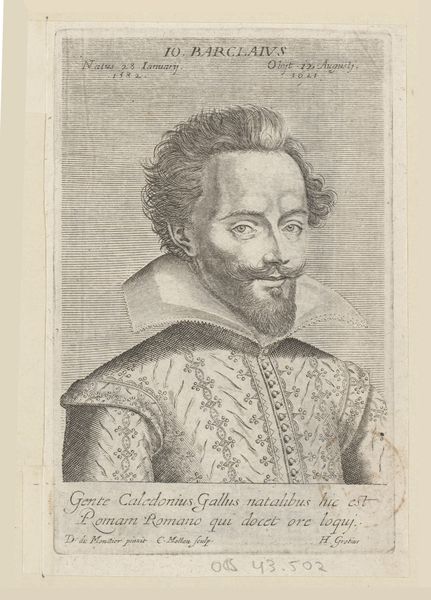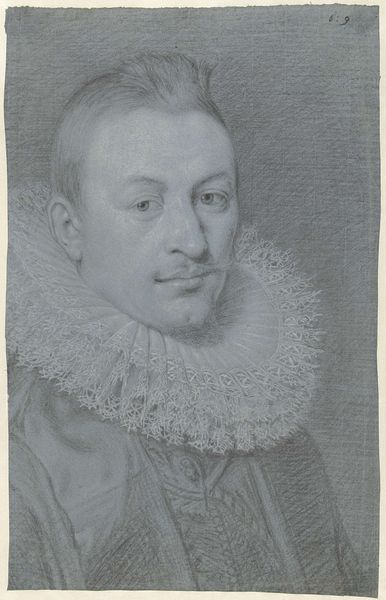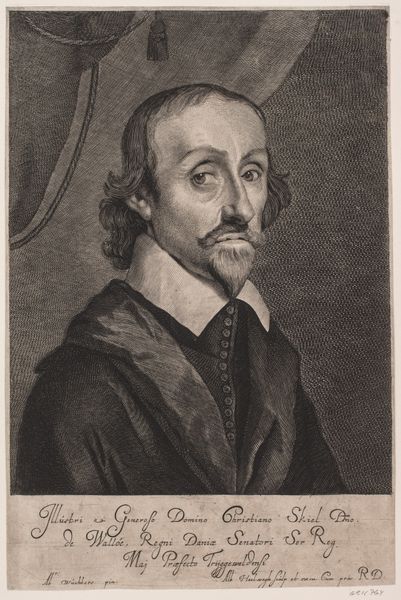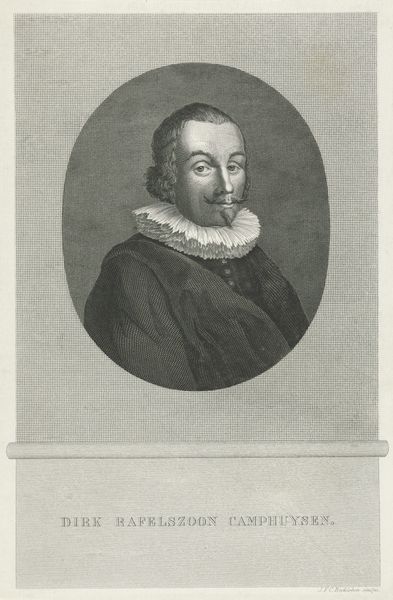
drawing, print
#
portrait
#
drawing
# print
#
11_renaissance
#
northern-renaissance
Dimensions: 11 1/4 x 8 11/16 in. (28.5 x 22 cm)
Copyright: Public Domain
Editor: Here we have "Portrait of a Man," from 1594. It's a drawing and print, artist unknown, and currently residing at The Met. There's an arresting gaze, a solemnity that I find striking. How do you interpret this work, particularly its enduring power? Curator: The gaze holds significant cultural weight, doesn’t it? The eyes, the window to the soul – it’s a visual trope we’ve inherited, and portraits like this helped solidify it. Look at how the ruff frames his face, directing our attention. Consider how that period favored direct and sober gazes to denote honesty. Is it possible this man desired a reputable identity that an unassuming image provides? Editor: That’s fascinating. The ruff definitely acts as a frame, a symbol of status too, right? It draws you in while simultaneously acting as a barrier. Curator: Exactly. Think about what a ruff represents – wealth, meticulous care, social standing. It's a constructed identity, layered onto the man himself. The precision of line in the face suggests both confidence and an aspiration to power. Are those details carefully designed to craft a message, or is the message simply of wealth? Editor: I hadn't considered it as consciously constructed. I was so caught up in the face, but you’re right, it's the entire package conveying this sense of… intentional presence. Curator: And it endures because those symbols, even if we don't consciously recognize them all, still resonate. Power, status, identity – these are timeless themes, presented through a specific visual language. How does considering his intended legacy alter your perception of his gaze now? Editor: It makes it feel less like a passive observation and more like an active… projection. Thank you! I now find I can bring more than a first glance at a pretty picture, into something that speaks volumes!
Comments
No comments
Be the first to comment and join the conversation on the ultimate creative platform.
